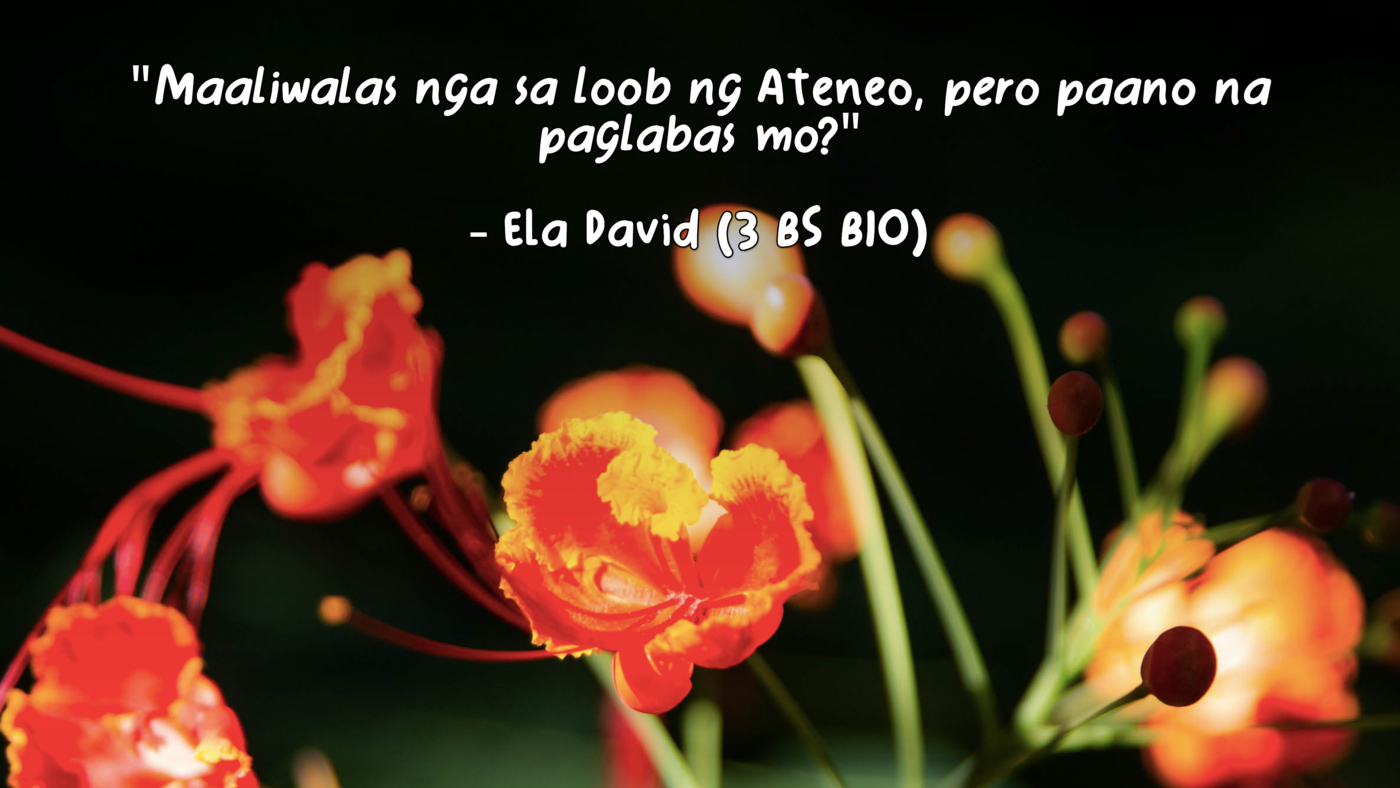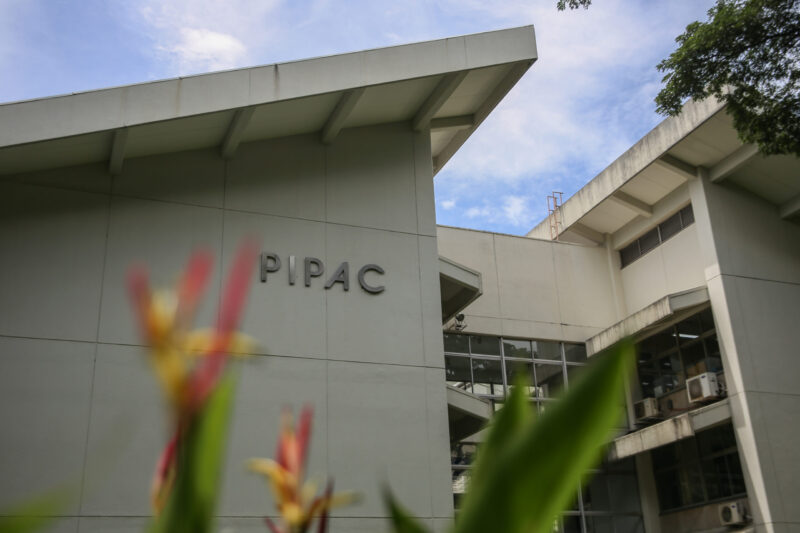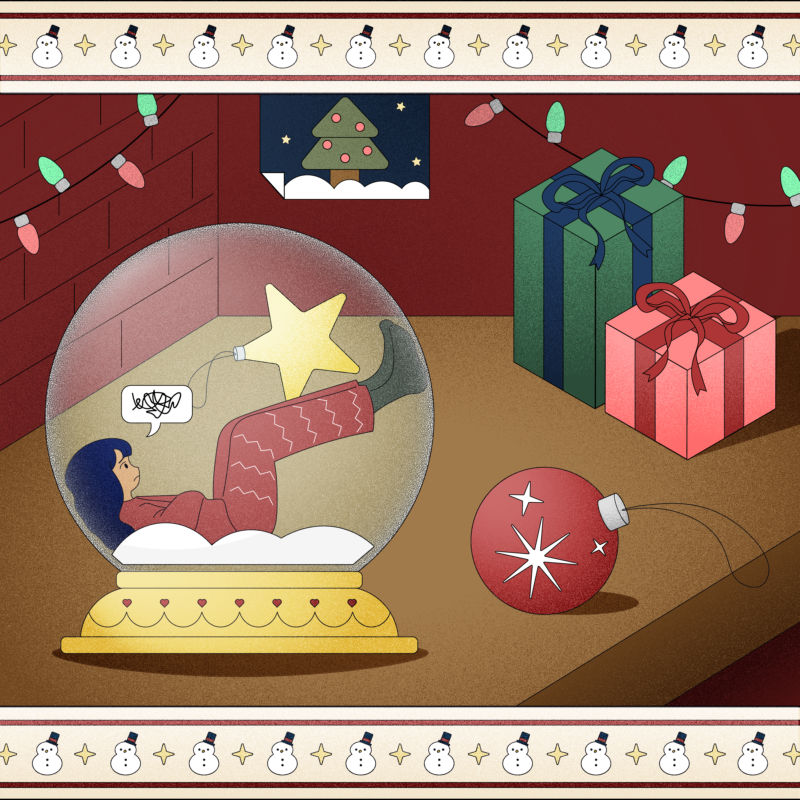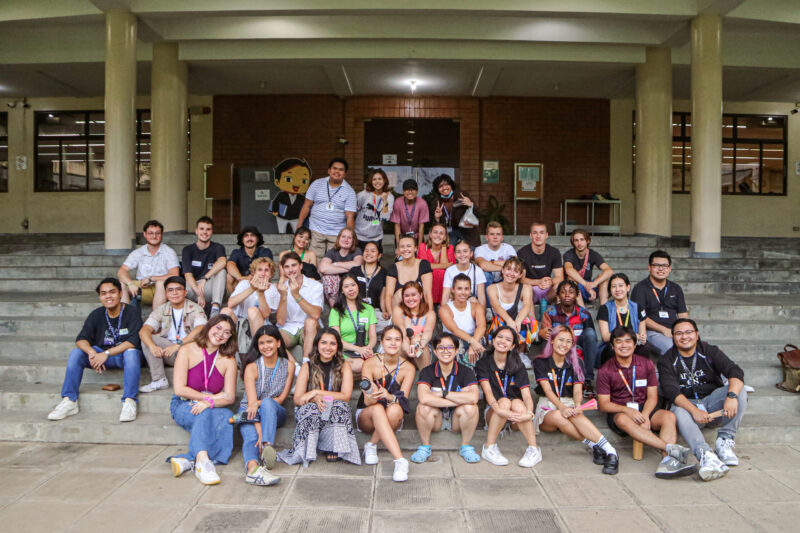FROM THE smallest microorganisms to towering trees, biodiversity paints the canvas of the world with an array of experiences and possibilities.
As September heralded Biodiversity Month, a renewed sense of commitment grips society to protect the variety of species inhabiting our ecosystem. Venturing into the heart of the Ateneo campus are hidden corners where life thrives. Enclosed within such nooks is a tapestry of flora and fauna that often escape the hurried gaze of Ateneans’ daily lives.
Spearheading sustainability
Bridging the gap between awareness and action, the Ateneo’s dedication to environmental conservation goes beyond Biodiversity Month. The University takes part in embodying the call to become a Laudato Si’ university and shape a harmonious future for humanity and nature.
Their dedication to this cause is evident in the morning light. Within the campus, biodiversity murals are widespread along the Red Brick Road while botanical gardens—or the Arboretum of 101 Threatened Philippine Trees—along Fr. Masterson Drive stand as living libraries, showcasing various species’ stories of resilience and survival.
Aside from this, the Ateneo takes pride in the scattered pollinator pockets, which serve as educational spaces to raise awareness about the critical issues surrounding pollinator conservation.
Glimpses of green
Photo courtesy of Ateneo Wild
Graphics by Lance Batara
Standing sentinel over the Lower East Carpark and the Wildlife Sanctuary, the fruiting Salisi (Ficus benjamina) is a source of shelter and sustenance for the campus’ feathered inhabitants. These trees, with their bright red figs, offer a unique visual spectacle that reminds us of the intricate connection between nature and the changing seasons.
Avielle Gregorio (2 BS CS) fondly recalls spotting this plant, likening its appearance to festive berries, which is remarkable since “-ber” months have just begun. “Ateneo has a lot of room for nature, allowing wildlife to thrive in their natural habitats,” she emphasized.

Photo by Mike Perfecto
Graphics by Lance Batara
Along the School of Management Forest walk, the Caballeros (Caesalpinia pulcherrima) are an enchanting display of tropical splendor, attracting pollinators to stop by for food. Ela David (3 BS BIO) once caught sight of these flowers’ distinctive scarlet blooms, claiming that it was reminiscent of Catriona Gray’s fiery evening gown during the Miss Universe 2018.
David points out that biodiversity conservation is an impactful movement that extends beyond a single community. Thus, it is in everyone’s best interest to raise awareness about this issue and expand its reach. “Maaliwalas nga sa loob ng Ateneo, pero paano na paglabas mo? (It may be serene inside Ateneo, but what about when you step outside?)” she added.
Photo by Liana Fernando
Graphics by Lance Batara
Flaunting its thick green leaves and orange tubular blooms, the Fragrant Rondeletia (Rondeletia odorata) catches the attention of the Manuel V. Pangilinan Center for Student Leadership passersby. Its subtle scent, contrary to its name, does not deter the flower from being a favored spot for butterflies.
Highlighting the incredible floral diversity found within the campus, Vernie G. Sagun, PhD, a Biology Department lecturer, revealed that even for someone with his depth of knowledge, there are moments when the subtle nuances of Ateneo’s biodiversity can be overlooked. Hence, to aid in their identification, he advocated for detailed and educational labels on all plants across the campus. His passion extends to his vision of launching a website dedicated to cataloging Ateneo’s rich flora.
Creatures of campus
As the sun reaches its peak, the animals begin their daily adventures.
Photo courtesy of Ateneo Wild
Graphics by Lance Batara
During noon time, the Collared Kingfisher (Todiramphus chloris) perches on electrical cables in the Lower East Carpark and Paseo de Reilly. Its blue feathers and crown make it a hidden Ateneo emblem.
Ateneo Biodiversity Research Laboratory Head Emmanuel Delocado, PhD, underscores the importance of mainstreaming sustainability among students and neighboring countries.
“People who are like-minded within the university—regardless of their school, regardless of their unit—would come together to collaborate, coordinate, and mainstream sustainability on campus and beyond,” Delocado adds. Likewise, the Collared Kingfisher embodies his message that, despite different interests, skills, and disciplines, the community comes together like the individual feathers of the Kingfisher’s cerulean plumage. Thus, we must unite as a community to protect our urban ecology from destruction.
Photo by Izza Zamoranos
Graphics by Lance Batara
Hidden in the lush botanical garden, the dark-eye masked Yellow-Vented Bulbul (Pycnonotus goiavier), known for its melodious call, flaunts its yellow-feathered tail.
Vaughn Alvarez (2 BS CS) notes that despite the Bulbul being aloft in the trees, noise and light pollution may still disrupt its daily living. “Promoting the conservation of ecosystems would very much align with the holistic development that the Ateneo aims for, as the world around us is just as important, if not more, as all other aspects of our lives,” they add.
Photo by Daryl D. Sy
Graphics by Lance Batara
As the bell signals the end of the day, some Ateneans with their gleaming eyes and leisurely prowl remain on the campus they call home. Cats (Felis catus), loyal companions of students and staff alike, are found almost everywhere you turn. However, many Cateneans, such as the late Paopao and Prada, remain vulnerable due to insufficient funding and negligent driving that can compromise the population further.
Angela Tiongson (3 BS BIO) reiterates that Ateneo’s dedication to ethical leadership and effective altruism is a reflection of its commitment to being at the forefront of ecological conservation. Such ethical leadership and effective altruism go hand-in-hand to include the implementation and subsequent observation of safety measures for both individuals and animals.
Nurturing nature’s tapestry
As moonlit trees begin their slumber, the wilderness hidden beneath beckons and urges. September is not only a celebration of Biodiversity Month but a reminder of unkept promises to the unsung heroes who fight to keep our environment at equilibrium. This brief journey through the Ateneo’s vibrant ecosystem glaringly points out the apparent surface-level knowledge of the flora and fauna accompanying Ateneans throughout their stay.
The Ateneo remains at the forefront of championing biodiversity through its pollinator pockets and botanical gardens. However, its upkeep would be impossible without the entire Ateneo community.
“The first step into creating a domino effect of good environmental policy is through educating future policymakers—the young,” says Ninez Manaloto, MSc, L.T., a Biology Department instructor specializing in botany and biodiversity.
Now cognizant of our responsibility and nature’s need for urgency, the Ateneo community must unite in advocating for the conservation of biodiversity even beyond the month of September, or else risk unraveling nature’s tapestry.






